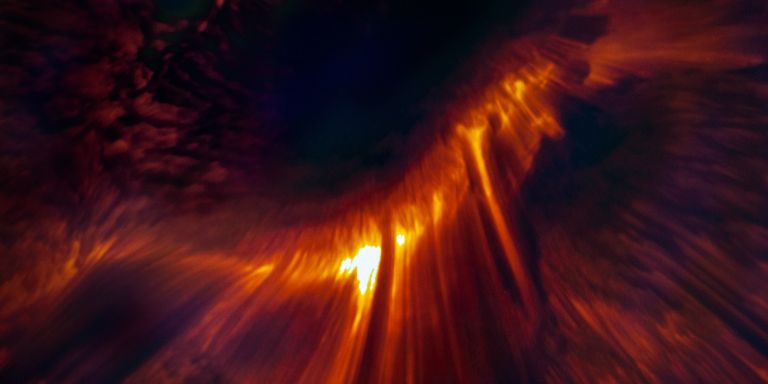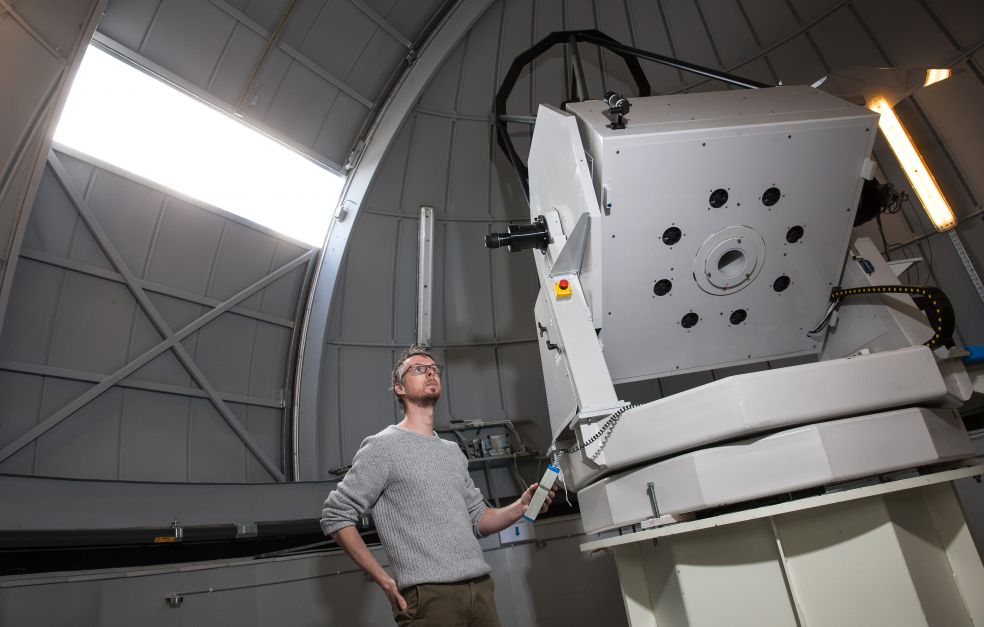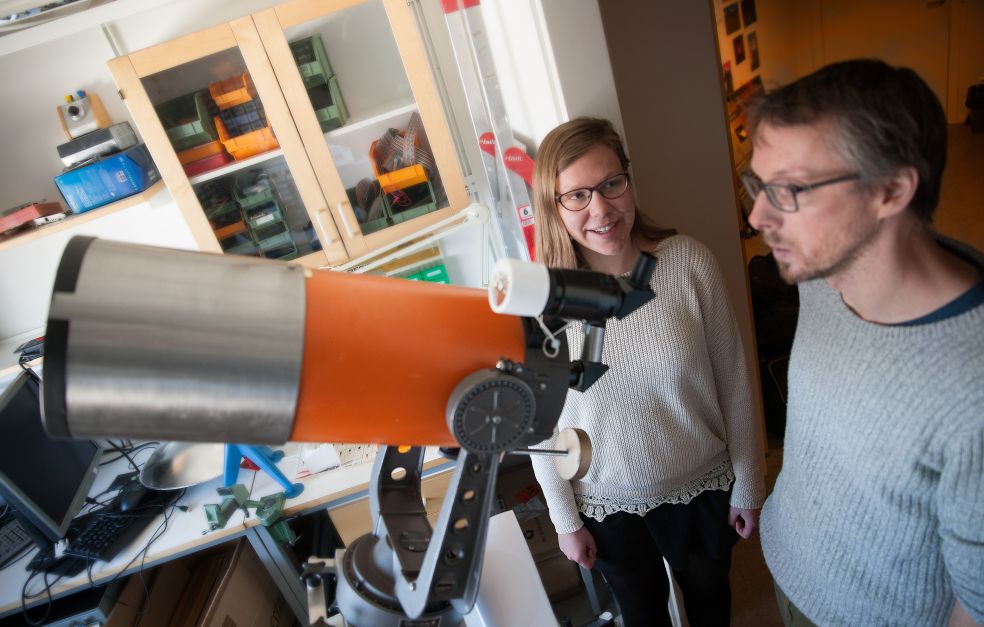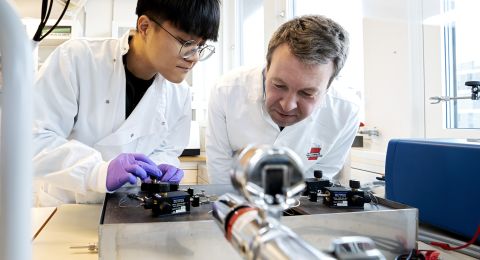
Project Grant 2016
Fundamental magnetic processes in the solar chromosphere
Principal investigator:
Associate Professor Jorrit Leenaarts
Co-investigators:
Max Planck Institute for Solar System Research
Sami Solanki
Institution:
Stockholm University
Grant in SEK:
SEK 34 million over five years
The sun is 150 million kilometers from Earth, and is our nearest star, explains Leenaarts. He is an astronomer, and has researched solar physics since his time as a PhD student in the Netherlands. He now heads a research team at Stockholm University.
“Because the sun is so close to us we can study it in greater detail than other stars. That’s why I like solar physics. And the more we understand about the sun, the more we will understand other stars and solar systems that we can’t observe as easily.”
Another reason to study the sun is to learn more about “space weather” Phenomena such as solar storms are the result of solar activity and can impact Earth.
“The sun is magnetized. Its magnetic fields create solar activity. Space weather can disrupt our satellite communications, for example, and major solar storms can damage power grids, and create problems for rail and air traffic,” says Leenaarts.
With the help of images from telescopes and advanced computer simulations, his team is studying how magnetic fields form the sun’s atmosphere. This knowledge may be a useful aid in predicting space weather in the future.
“We are mainly engaged in curiosity-driven research. But in some years’ time, perhaps 20 years from now, our studies may have practical applications in forecasting space weather.”
Hot chromosphere
A great mystery that solar physicists want to explain is why the outer layer of the solar atmosphere is so hot. What is it that causes the temperature to fall closer to the heart of the sun, before rising again further out?
“The heat in the outer layer – the chromosphere – must be due to magnetic fields. If they were not present, it would be much cooler there. In our research field there is a lively debate about which physical processes create this heat. There are numerous theories.”
Leenaarts has joined forces with researchers at the Max Planck Institute in Germany. Together, they are developing a new instrument to study magnetic fields in the chromosphere. The aim is to identify the processes involved in the rise in temperature. The project has received a five-year grant from the Knut and Alice Wallenberg Foundation.
“We are extremely grateful for the support. It wouldn’t be possible to carry out this ambitious project without funding from the Foundation.”
Creating a 3D model
In the early 2000s the Swedish Solar 1-m Telescope (SST) was built on La Palma, one of the Canary Islands. It will be joined by the new instrument – Helium SpectroPolarimeter (HeSP) – when it has been completed.
“SST is already the world’s best solar telescope. HeSP will give us even sharper images, with better temporal resolution. We will be able to see minute details of the magnetic fields and show them in 3D.”
A pilot version has already been successfully tested. The project team is now developing the technology. It will take two years for the engineers at the Max Planck Institute to build HeSP. The instrument will then be installed and tested. Observations are set to begin by summer 2019.
“We will then have three high-quality instruments at SST that we can use in our research. At present we can observe blue light and red light. HeSP will enable us to see infrared light as well. By using the instruments in parallel we will be able to see the entire solar spectrum – all colors at the same time.”
Leenaarts says that the combination of instruments will be extremely powerful, and shows some images from earlier observations on his computer screen. The research team wants to study temperatures, energies and magnetic fields in all layers of the solar atmosphere in order to make a 3D model of solar processes.
“To create a 3D image we will have to observe a large number of wavelengths simultaneously. Everything changes in seconds in the solar atmosphere. Our technology will enable us to, one image every four seconds, capturing small changes in the weak magnetic fields in the chromosphere. No-one has managed to do this before.”
Masses of data to be interpreted
Along the corridor at the Department of Astronomy hang colorful images of solar observations. But Leenaarts reveals that the originals are monochrome and not particularly beautiful. Before they can be used and interpreted, they have to be processed. And this no short order. The entire chromosphere project is expected to generate 500 terabytes of data. A huge number of images will need to be processed using advanced software.
As with all research, it is difficult to prophesy about the results. One thing is for sure – Leenaarts and his fellow researchers will know more in five years’ time than they do today.
“We might discover something completely new. We will in any case be able to test, reject and confirm theories about what makes the chromosphere get so hot. For me, that’s the ultimate aim of the project.”
Text Susanne Rosén
Translation Maxwell Arding
Photo Magnus Bergström
Stockholm University and the Department of Solar Physics have also received other grants from the Foundation to build successful instruments at SST.





